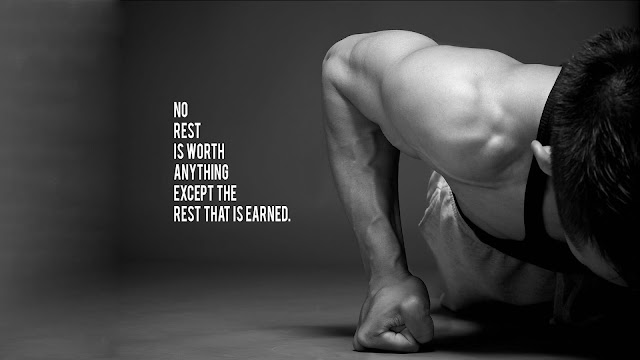I don't want you to struggle with more
challenges than you already have to-many are avoidable! If you can make
your first steps positive ones, you'll make excellent progress right away
and avoid feeling lost at the start of your fitness journey.
AGE IS NOT AN BORDER FOR A FIGHTER
WEEK 1: WHOLE IN ONE
You’ll
begin the program with a full-body training split, meaning you’ll train all
major bodyparts in each workout (as opposed to “splitting up” your training). Train
three days this first week, performing just one exercise per bodypart in each
session. It’s important that you have a day of rest between each workout to
allow your body to recover; this makes training Monday, Wednesday and Friday
with Saturday and Sunday being rest days a good approach.
WEEK 2: SPLIT DECISION
You’re only a week into the program, yet you’ll begin to train different
bodyparts on different days with a two-day training split (meaning the entire
body is trained over the course of two days, rather than one as in the first
week). You’ll train a total of four days this week; the split includes two
upper-body days (Monday and Thursday) and two lower-body days (Tuesday and
Friday), and each bodypart is trained twice. Wednesday, Saturday and Sunday
will be your recovery days.
Several exercises from Week 1 are carried over to Week 2, but one move
is added to each bodypart routine with the exception of abs so you can train
all muscle groups more completely from multiple angles. Chest, for example,
includes two exercises: One is a compound movement (dumbbell bench press) that
involves multiple joints (both the shoulder and elbow) to work the largest
amount of muscle possible, and the other is an isolation exercise (dumbbell
flye) that involves only one joint (shoulder) and targets the pecs to a greater
extent. (When doing presses for chest, the deltoids and triceps are involved to
a degree, meaning presses don’t isolate the pecs as much as flyes do.)
WEEK 3: THREE ON THREE
One new exercise is added to each bodypart
routine to provide even more angles from which to train your target muscles to
promote complete development. You’ll hit each muscle group with two exercises
of 3–4 sets each : four sets for large bodyparts (chest, back, shoulders,
quads, hamstrings) and three sets for smaller bodyparts (biceps, triceps, abs,
calves). The result is 16 total sets for the week for large bodyparts and 12 sets
total for smaller ones again, working in the 8–15-rep range which is a
substantial increase in volume from Week 1.
WEEK 4: TURNING UP THE VOLUME
In the fourth and final week of the program, you’ll train four days in a
four-way split that hits each bodypart just once (except for calves and abs,
which are each trained twice). Four-day splits are common among experienced
lifters because they involve training fewer bodyparts (typically 2–3) per
workout, which gives each muscle group ample attention and allows you to train
with higher volume. As you’ll see, chest and triceps are paired up, as are back
with biceps and quads with hamstrings, each a very common pairing among novice
and advanced bodybuilders. Shoulders are trained more or less on their own, and
you’ll alternate hitting calves and abs which respond well to being trained
multiple times per week every other workout. No new exercises are introduced in
Week 4 so that you can focus on intensity in your workouts instead of learning
new movements.
Rep schemes remain in the hypertrophy range this week, but overall
volume increases by adding more sets to individual exercises: up to five sets
per move for larger bodyparts, and even 10 sets of calf raises on Thursday.
This bump in volume will ensure that your muscles are overloaded sufficiently
to continue the growth they’ve already begun experiencing in the first three
weeks. Completion of this four-week program now entitles you to go to the next
stage.







No comments:
Post a Comment